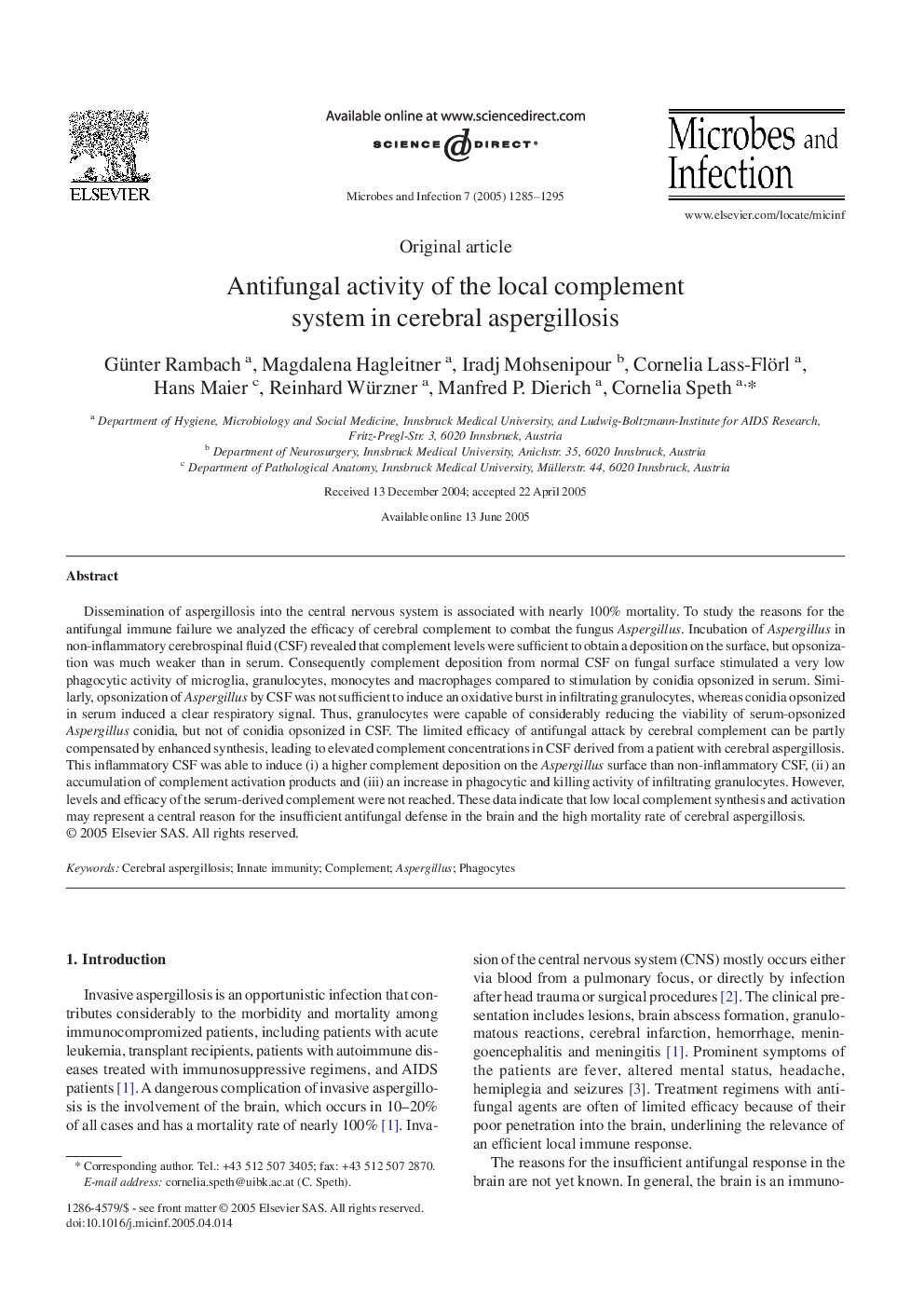| Article ID | Journal | Published Year | Pages | File Type |
|---|---|---|---|---|
| 9282920 | Microbes and Infection | 2005 | 11 Pages |
Abstract
Dissemination of aspergillosis into the central nervous system is associated with nearly 100% mortality. To study the reasons for the antifungal immune failure we analyzed the efficacy of cerebral complement to combat the fungus Aspergillus. Incubation of Aspergillus in non-inflammatory cerebrospinal fluid (CSF) revealed that complement levels were sufficient to obtain a deposition on the surface, but opsonization was much weaker than in serum. Consequently complement deposition from normal CSF on fungal surface stimulated a very low phagocytic activity of microglia, granulocytes, monocytes and macrophages compared to stimulation by conidia opsonized in serum. Similarly, opsonization of Aspergillus by CSF was not sufficient to induce an oxidative burst in infiltrating granulocytes, whereas conidia opsonized in serum induced a clear respiratory signal. Thus, granulocytes were capable of considerably reducing the viability of serum-opsonized Aspergillus conidia, but not of conidia opsonized in CSF. The limited efficacy of antifungal attack by cerebral complement can be partly compensated by enhanced synthesis, leading to elevated complement concentrations in CSF derived from a patient with cerebral aspergillosis. This inflammatory CSF was able to induce (i) a higher complement deposition on the Aspergillus surface than non-inflammatory CSF, (ii) an accumulation of complement activation products and (iii) an increase in phagocytic and killing activity of infiltrating granulocytes. However, levels and efficacy of the serum-derived complement were not reached. These data indicate that low local complement synthesis and activation may represent a central reason for the insufficient antifungal defense in the brain and the high mortality rate of cerebral aspergillosis.
Related Topics
Life Sciences
Immunology and Microbiology
Immunology
Authors
Günter Rambach, Magdalena Hagleitner, Iradj Mohsenipour, Cornelia Lass-Flörl, Hans Maier, Reinhard Würzner, Manfred P. Dierich, Cornelia Speth,
